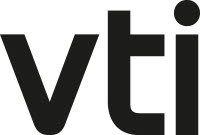No 2023:4: How will electrification and increased use of new fuels affect the effectiveness of freight modal shift policies?
Magnus Johansson (), Inge Vierth (), Kristina Holmgren () and Kevin Cullinane ()
Additional contact information
Magnus Johansson: Swedish National Road & Transport Research Institute (VTI), Postal: Dept. of Transport Economics, P.O. Box 55685, SE-102 15 Stockholm, Sweden
Inge Vierth: Swedish National Road & Transport Research Institute (VTI), Postal: Dept. of Transport Economics, P.O. Box 55685, SE-102 15 Stockholm, Sweden
Kristina Holmgren: RISE, Postal: Dept. of Transport Economics, P.O. Box 55685, SE-102 15 Stockholm, Sweden
Kevin Cullinane: Göteborg University, Postal: Dept. of Transport Economics, P.O. Box 55685, SE-102 15 Stockholm, Sweden
Abstract: The objective of this paper is to determine how policy instruments targeting a modal shift of long-haul freight transport from road to rail or shipping might affect the distribution of freight tonne-kilometers across the different modes of transport in Sweden. The analysis is conducted in two steps. First, possible developments of freight tonne-kilometers until 2030 and 2040 are compared to base figures for 2017. This is done by developing a set of alternative forecast models where different assumptions and scenarios prevail and analyzing these using Sweden’s national freight transport model SAMGODS. Second, the effects of two hypothetical modal shift policy instruments – a wear and tear tax for road traffic and an ecobonus scheme to promote shipping by rail and sea – are analysed with respect to modal split in the base year of 2017 and for the forecast year 2040. The analysis involves the aggregation of calculated modal shares across each of the SAMGODS model's vehicle/ship types – i.e., six road freight vehicles, eleven freight train variants and 22 ship types. Given the conditions that are assumed in the forecasts, the amount of freight tonne- kilometers is calculated to increase by between 31% and 53 % between 2017 and 2040. The increase is generally largest for maritime transport, followed by road transport and smallest for rail transport. The concept developed in this paper can be useful in studying impacts of different types of technology shifts and policy packages.
Keywords: Freight transport; Modal split; Transport work; Forecast models; Policy analysis
Language: English
33 pages, May 25, 2023
Full text files
VTI%202023%204.pdfFull text
- Swedish National Road & Transport Research Institute (VTI)
- See also CTS Working papers in Transport Economics
- Ordering Working Papers
- Home page for this series
Questions (including download problems) about the papers in this series should be directed to Biblioteket vid VTI ()
Report other problems with accessing this service to Sune Karlsson ().
RePEc:hhs:vtiwps:2023_004This page generated on 2024-09-13 22:17:40.

